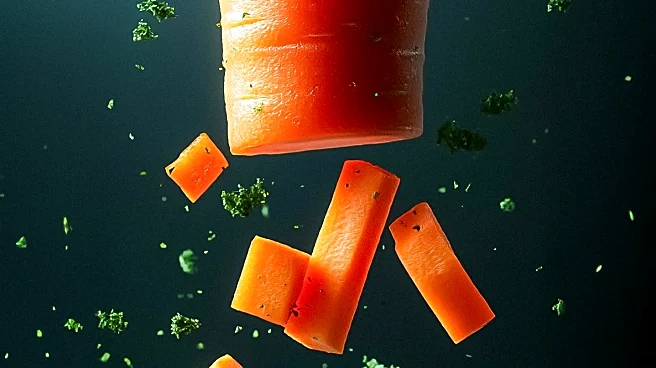What is the story about?
What's Happening?
A Brazilian study has found that microplastics can penetrate deep into bone tissue, potentially affecting bone metabolism and health. The research, published in Osteoporosis International, suggests that microplastics may impair cell viability, accelerate aging, and alter cell differentiation in bone tissue cells. These effects could lead to bone weakening, deformities, and fractures. The study reviewed 62 scientific papers and highlighted the impact of microplastics on osteoclasts, cells responsible for bone renewal. Researchers plan to further investigate the effects of microplastics on rodent femurs to understand their implications for human health.
Why It's Important?
The findings underscore the potential health risks posed by microplastics, which are prevalent in everyday items like food, clothing, and personal care products. As osteoporosis and other bone-related diseases become more common, understanding environmental factors that contribute to these conditions is crucial. This research could lead to new insights into the prevention and management of bone health issues, emphasizing the need for strategies to reduce microplastic exposure.
What's Next?
Future studies will focus on the impact of microplastics on bone strength and their potential role in increasing the incidence of bone fractures. Researchers aim to generate evidence that microplastics could be a controllable environmental factor in bone health. Public health initiatives may be developed to reduce microplastic exposure and mitigate its effects on health.
Beyond the Headlines
The study raises ethical questions about the responsibility of industries and governments in managing plastic pollution. It highlights the need for sustainable practices and policies to protect public health and the environment. Long-term, this research could influence consumer behavior and drive efforts to reduce plastic waste.
AI Generated Content
Do you find this article useful?














